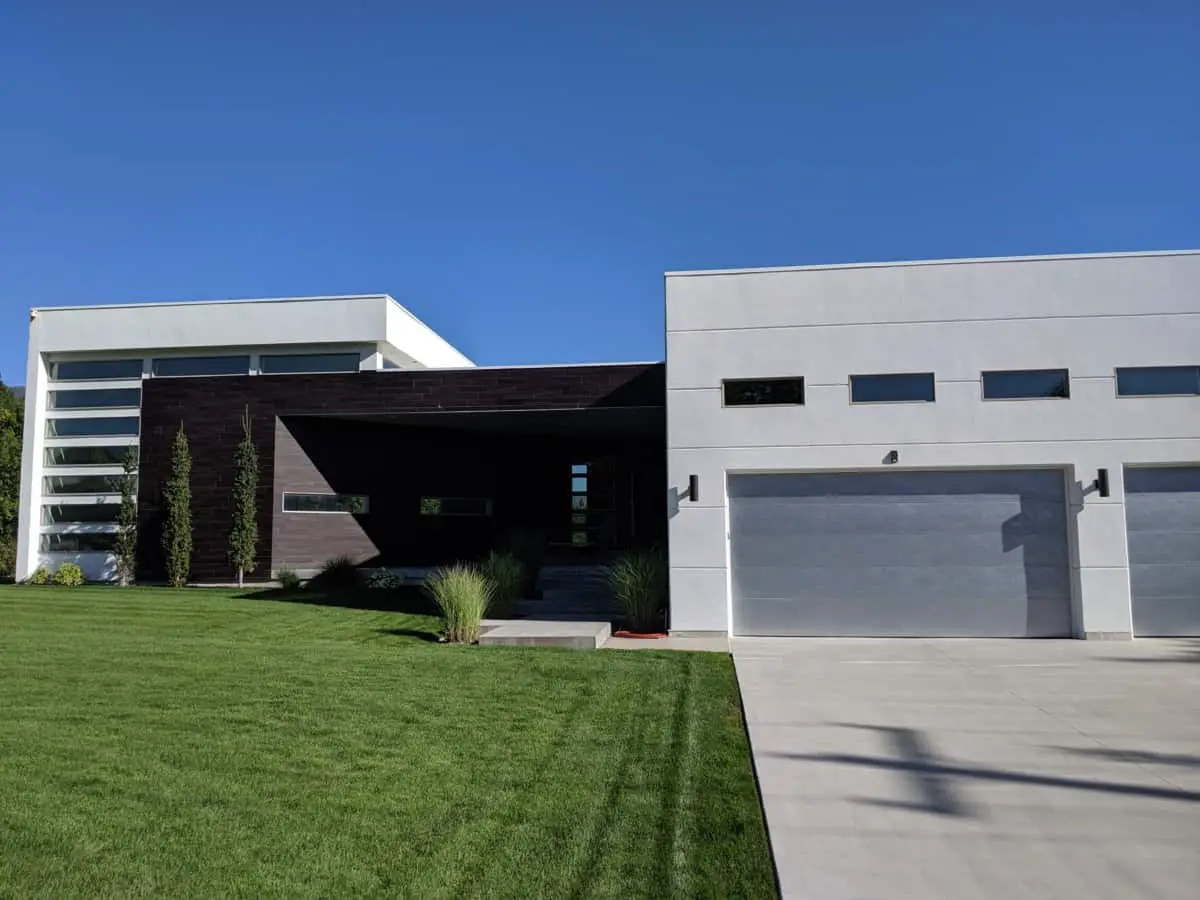
If you have a flat or low slope roof you may be wondering. Can a roof be too flat for shingles? The direct answer to this question is yes. You should not shingle a flat roof.
Different roofing materials require different slopes or pitches.
The minimum pitch required for shingles is 2/12 which means for every 12 inches, the roof rises 2 inches.
Any slope that has a pitch less than 2/12 is too flat for shingles and should be covered with flat roof materials such as TPO, PVC, EPDM rubber, or others.
Besides shingles, there are other roofing materials that should not be used on flat roofs. Understanding how shingles work and what problems can arise from installing them on a flat roof will help you to know what other types of materials are not good for flat roofs.
Worried About Doing the Work Yourself?
I recommend finding a professional roofing contractor through our trusted partner Home Advisor because they allow you to get up to 4 quotes for free. This allows you to compare and choose the best roofing professional for your needs. Check them out by clicking this link.
What problems come from shingling a flat roof?
Shingles work just like scales of a fish to help protect your home from the outside elements like water and UV rays.
When installed properly, shingles are layered on top of each other just as scales are layered.
Starting from the bottom of the roof and layering up to the top of the roof, shingles make an effective barrier against water.
This layering allows water to easily flow along the top of the shingles and into the gutter system.
Shingles work best when roofs have a steeper pitch that is 4/12 or more. If the shingles are placed on a roof with less than 2/12 pitch, then the system is no longer effective because the water will pool up underneath the shingles.
If water collects underneath the shingles, then you will likely end up with a leaky roof.
The winter season creates an especially challenging problem because water can travel up the roof underneath the shingles.
Throughout the winter season, the temperature can fluctuate. When the snow collects on the roof and is heated, the snow melts into water and runs down the roof. However, when the temperature drops again the water freezes into ice.
As the water goes through this cycle of melting and freezing it travels up the roof underneath the shingles and can create an ice dam.
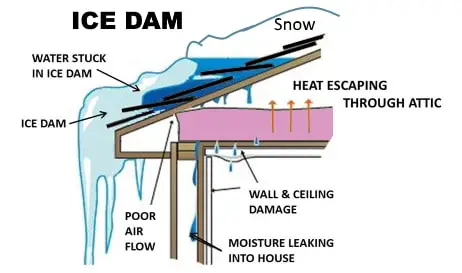
An Ice dam is when a large layer of ice forms at the bottom edge of the roof. It can add extra weight on the eaves and trap water underneath the shingles causing a leak.
To counteract this, a special membrane sometimes called Ice &Water Shield is installed over the bottom edge of the roof and in critical flow areas like valleys.
This membrane is made out of polymer-modified bitumen or a type of asphalt.
When heated by the sun, it acts as a glue and seals down the top of the shingles to the wood decking.
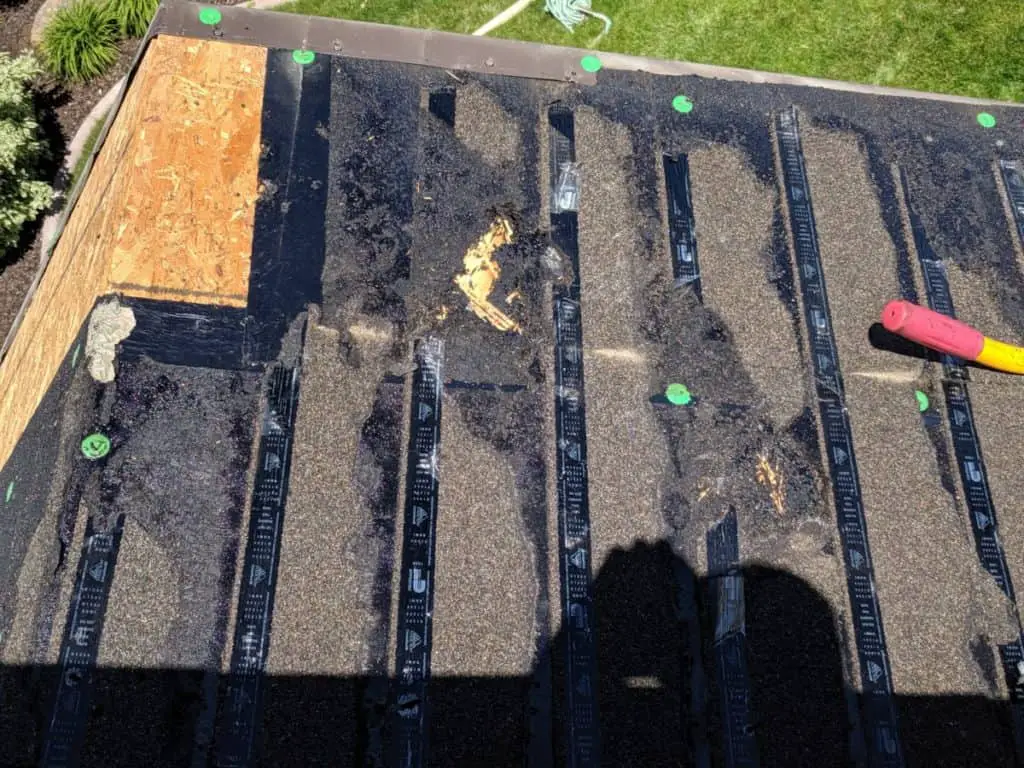
Notice in the picture above how the tops of the shingles stay attached to the Ice & Water shield when torn off.
Once the shingles have sealed to the membrane, it is more difficult to remove.
But this is a good thing because it helps protect against water that may climb up underneath the shingles.
Other Types of Materials That Aren’t Good for Flat Roofs?
Roofing materials that are layered similar to shingles are not effective on flat roofs mainly because they use the same layering technique.
Some of these other materials are:
- Slate Shingles
- Clay Tiles
- Solar Tiles
- Steel Coated Steel
- Concrete Tiles
- Metal Panels
- Rubber Slate
You can also click here to learn more about other types of roofing materials.
However, all hope is not lost if you have a low-pitched roof and wanted to use one of these materials. Each material has its own specific minimal slope requirements.
I created a helpful chart showing the minimal pitch required for each material based on manufacturer’s recommendations.
| Type of Roof Material | Minimum Pitch Required for Installation |
| Asphalt Shingles | 2/12, 2:12 |
| Slate Shingles | 3:12 |
| Clay / Concrete Tile Shingles | 4:12 or 2.5/12 if two layers of underlayment is used. |
| Solar Tiles | 3:12 |
| Metal Panels | 3:12 |
| Rubber Slate | 3:12 |
| Stone Coated Steel | 3:12 |
This chart is only helpful if you know the slope of your own roof. There are several different ways you can find out the slope of your own roof.
How to Find the Slope of Your Roof?
I created a tool that you can download and print to help you measure the pitch of your own roof.
Click Here to Download Pitch Measurement Tool PDF
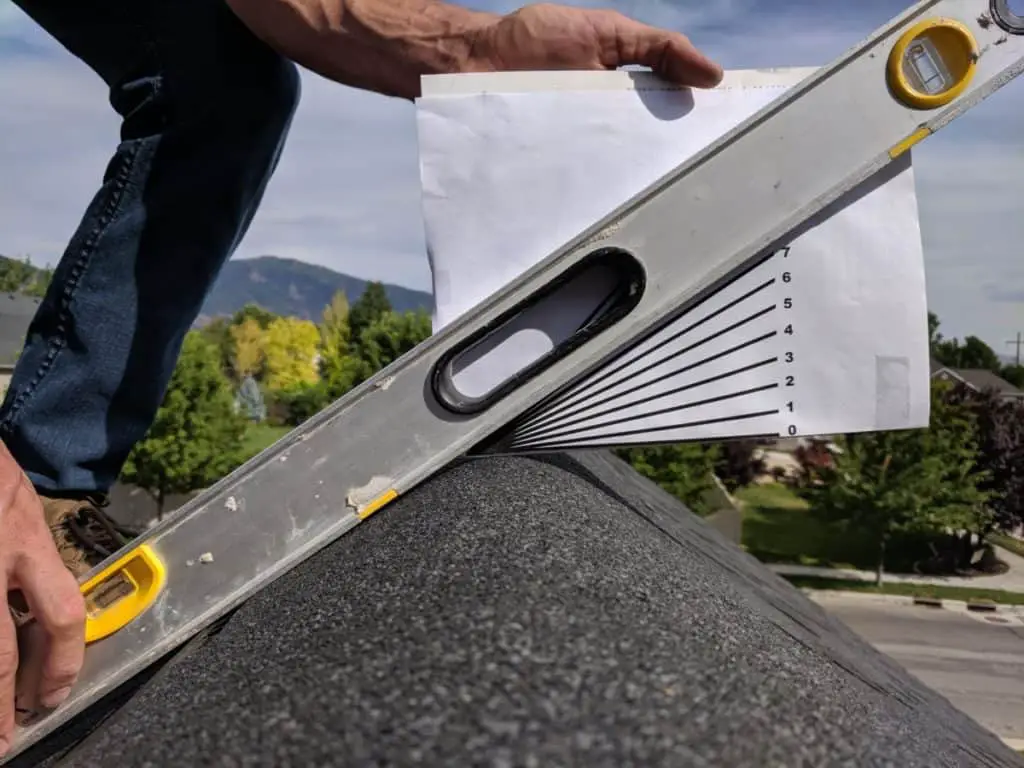
Using the tool is simple to use. First, print it out on the standard 8.5″ by 11″ piece of paper.
Then fold down the bottom of the paper so the bottom “0” line is flush to the edge of the paper.
I also found it easiest to tape the paper to a book or a piece of cardboard, that way it doesn’t blow in the wind when you are measuring.
To measure the slope of your roof, simply take a straight edge and rest it against the roof over the top of the peak.
Next, line up the bottom left corner of the paper to the point where the straight edge and the peak of the roof last touch. Make sure you hold the paper as straight as you can perpendicular to the top of the peak.
Then you can take the measurement of the slope. In the picture shown, the pitch of the roof is 7/12, 7:12, or 58%
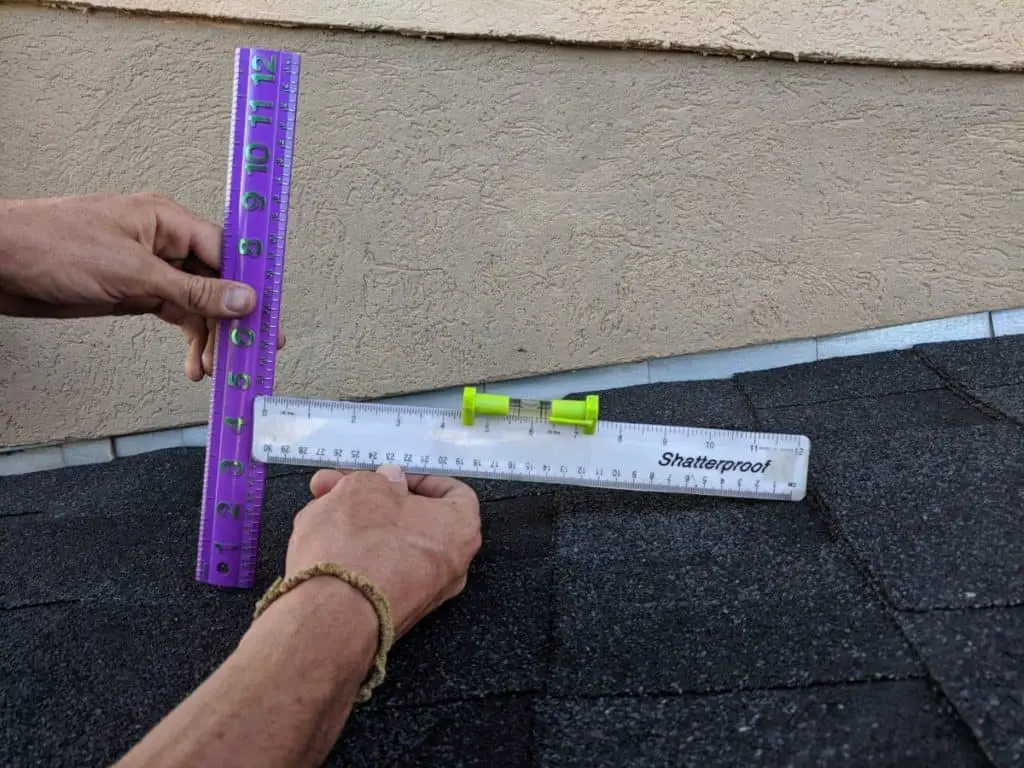
If for whatever reason the slope tool I made doesn’t work for you. Then another way to measure the slope would be to use two rulers. With one ruler measure out 12-inches with the second ruler measure the distance from the bottom of the shingle to the top of the first ruler.
That will also give you the pitch of the roof. In the image above the pitch of the roof would be about 3:12 or 25%.
The angles of the various pitches and percent of grade are found using this conversion chart:
| Pitch | Angle | Percentage |
| 1:12 | 5° | 8% |
| 2:12 | 10° | 17% |
| 3:12 | 14° | 25% |
| 4:12 | 19° | 33% |
| 5:12 | 23° | 42% |
| 6:12 | 27° | 50% |
| 7:12 | 30° | 58% |
| 8:12 | 34° | 67% |
| 9:12 | 37° | 75% |
| 10:12 | 40° | 83% |
| 11:12 | 43° | 92% |
| 12:12 | 45° | 100% |
| 13:12 | 47° | 108% |
| 14:12 | 49° | 117% |
| 15:12 | 51 ° | 125% |
| 16:12 | 53° | 133% |
What Materials are Good to Use on Flat Roofs?
There are several types of roofing materials that are good for flat roofs. Some are primarily used for commercial roofing, and others are used for residential and commercial roofing.
Here are some common flat roof materials:
- TPO – Stands for Thermoplastic Polyolefin it is made of polypropylene and ethylene-propylene rubber. It is white, which makes it a heat reflective roof that is energy efficient. This type of roof system is used on both commercial and residential roofs.
- PVC Membrane – Is made from two layers of PVC roof material, then a polyester added in between the layers for reinforcement. PVC is generally more flexible than TPO. However, TPO is a little more weather resistant than PVC. Both are great to use on residential and commercial roofing systems.
- EPDM Rubber – Is made of ethylene and propylene which are derived from oil and natural gas. EPDM Rubber is a very durable roof system that can last over 50 years. The downside to EPDM rubber is that it doesn’t look as nice as the TPO or PVC Membrane.
- Modified Bitumen – Given in its name “Bitumen” we know that it’s an asphalt product. It is can be a cold-applied or hot-applied system. It has a similar disadvantage to EPDM Rubber because it’s black it absorbs more heat than the white TPO and PVC systems.
- Spray-On Roof – Is installed by spraying Polyurethane liquid on the roof. The liquid is very effective because it can find any small cracks or crevasses on the roof. It seals the roof when the liquid expands into a protective foam. This roof system is easy to install because it can be used on irregular or complicated roof types.
- Cap Sheets – Cap sheets are not meant for the whole roof system. Their main purpose is to cover only small flat areas that are sometimes found on roofs with asphalt shingles. Cap Sheets can be made of asphalt or tar-covered fiberglass. The outer coating is topped the same type of granules that the shingles are covered in. Essentially, it’s the same as a shingle except that it is a large flexible sheet.
- Built-Up Roof – Is made by layering reinforcing fabric and bitumen, it is then finished with a top layer of aggregate, such as stone or gravel. This type of roofing system is being replaced with the more popular TPO and PVC systems.
You can also click here to learn more about other roofing materials.
Related Questions
Which flat roof system lasts the longest? EPDM is the most durable flat roof system of today. It can last for 30+ years if installed properly. Other flat roof systems like TPO and PVC are rated to only last for about 20+ years.
What is the best material for a flat roof? In terms of durability, the top three best materials for roofing are:
- EPDM Rubber
- TPO
- PVC Membrane
What is the best slope for a roof? For an asphalt shingled roof, the best slope is at least 4:12, 4/12, or 4-inches rise for every 12-inches across. But the minimal required slope for shingles is 2/12 or 2:12.
